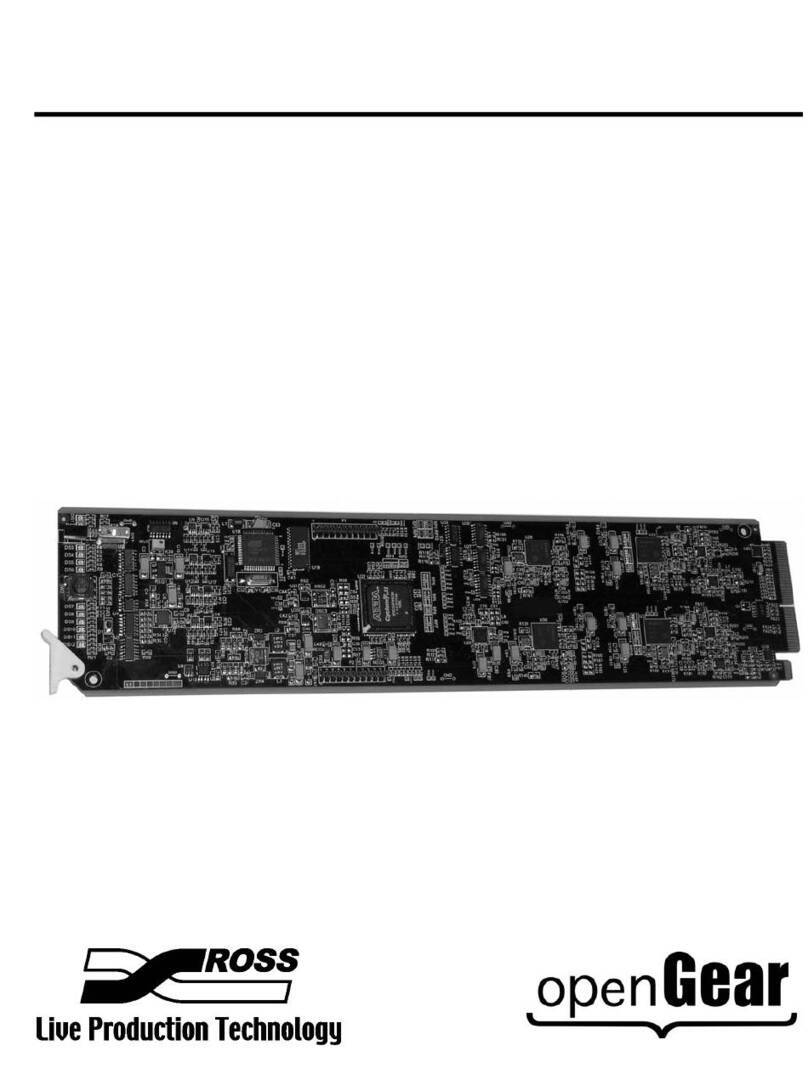
ii • Contents MFC-OG3-N and MFC-8322-S User Guide (v8.0)
Accessing a MFC-OG3-N and MFC-8322-S .........................................................................................................32
Configuring the Security Settings 33
Overview ................................................................................................................................................................33
SNMP Daemon ....................................................................................................................................................33
SSH Login ...........................................................................................................................................................33
Software Upgrades ..............................................................................................................................................33
SLP Daemon ........................................................................................................................................................33
Disabling a Service .................................................................................................................................................33
Enabling SNMP Support 35
Enabling SNMP Support ........................................................................................................................................35
Configuring the SNMP Agent using DashBoard ...................................................................................................36
DataSafe 37
Overview ................................................................................................................................................................37
Enabling DataSafe ..................................................................................................................................................37
Re-naming a Card Slot ...........................................................................................................................................38
Hiding the DataSafe Warnings ...............................................................................................................................38
Forcing DataSafe Files to Load ..............................................................................................................................39
Resetting an MFC-OG3-N to Factory Defaults .....................................................................................................39
Using the Alarm Button .........................................................................................................................................39
Configuring the Frame Glow 41
Setting the LED Mode ............................................................................................................................................41
Specifying the LED Color Theme ..........................................................................................................................41
Specifying the Frame Glow Color .........................................................................................................................42
Creating a Custom Color ........................................................................................................................................43
Functions for Locating the Frame ..........................................................................................................................43
Using the Locate Frame Button ...........................................................................................................................44
Using the Flash on Error Function ......................................................................................................................44
Upgrading the Software 45
DashBoard Interface Overview 47
Status Tabs .............................................................................................................................................................47
Product Tab .........................................................................................................................................................47
Network Tab ........................................................................................................................................................48
Hardware Tab ......................................................................................................................................................49
Power Tab ............................................................................................................................................................50
Setup Tab ................................................................................................................................................................51
Restoring Menu Items to the Factory Default Settings .......................................................................................52
Network Tab ...........................................................................................................................................................53
DataSafe Tab ..........................................................................................................................................................54
SNMP Tab ..............................................................................................................................................................55
Frame Glow Tab .....................................................................................................................................................56
Security Tab ...........................................................................................................................................................57
Service Information 59
MFC-OG3-N Troubleshooting Tips .......................................................................................................................59
Using a Web Browser ..........................................................................................................................................59
Alarm Mute Button .............................................................................................................................................59
MFC-8322-S Troubleshooting Tips .......................................................................................................................59
Warranty and Repair Policy ...................................................................................................................................60
In Case of Problems ............................................................................................................................................60
Glossary 61






























